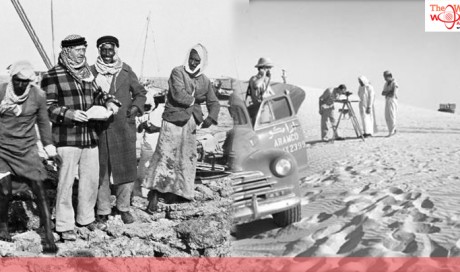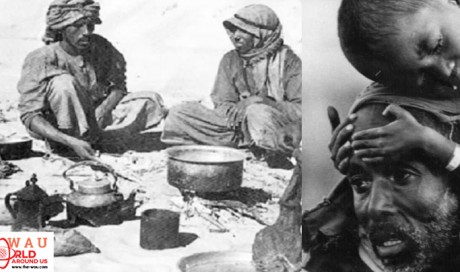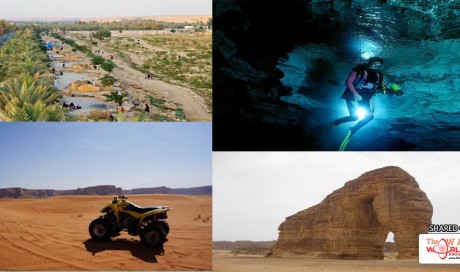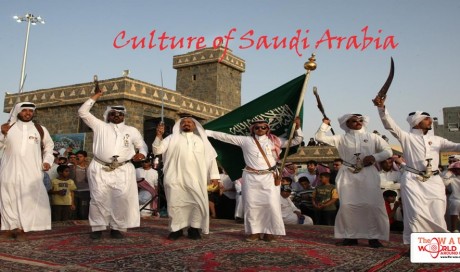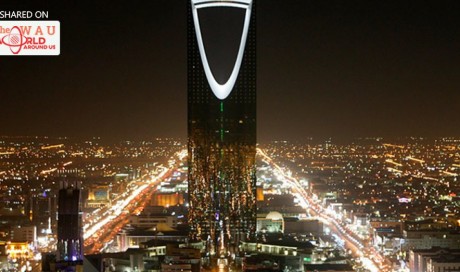National Identity. Contemporary Saudi Arabia arose from a process of state development that began in the late seventeenth century, when leaders of the Bani Khalid tribe created a state in the al-Ahsa area of today's Eastern Province. Other attempts at state building involved the Al Rashid and Al Idrisi dynasties in Najd and Asir, respectively. However, the most effective movement was initiated in the late 1730s by Sheikh Muhammad Al Abd al-Wahab (died 1792). After studying in the Hijaz and Iraq, he returned to Najd and preached and wrote against practices that deviated from Islam. He stressed the unity of God and urged his followers, who became known as muwahidun ("unitarians"), to end polytheistic practices and adhere strictly to the Koran and the Hadith (the sayings and doings of the Prophet).
In 1744, the sheikh swore an oath with Muhammad Al Saud, the emir of ad-Diriyah, that they would collaborate to establish a state
organized and run according to Islamic principles. Their goal was religious reform, a phenomenon that involved a new leadership structure that placed Al Saud in the position of umara (princes, rulers) and Al Abd al-Wahab (also known as Al Sheikh) in the position of ulama (learned in religion). The reform movement also involved military struggle, preaching, the establishment of Koranic schools, the setting up of new communities, and the creation of a bureaucratic state that ruled in Najd from 1765 and in Hijaz from 1803 until 1818, when it was defeated by an Ottoman army from Egypt. This state was reestablished in the mid-nineteenth century, overthrown by Al Rashid, and re-created through reconquest and religious reform under the leadership of Abd al-Aziz Al Saud beginning in 1902 and culminating with the declaration of the present kingdom in 1932.
Never a colony of a foreign power or a province of the Ottoman Empire, the Saudi Arabian state resulted from an indigenous local process of sociopolitical change and religious reform. Some think of that state as having a strong tribal dimension, in part because the Al Saud are of tribal origins. However, merchants provided loans and financial assistance, preachers and teachers built a consciousness among Muslims and imparted religious knowledge, and jurists and bureaucrats labored to carry out the work of a state without regard to tribal identity.
The legitimacy of the state is derived from Islam, along with the will of the citizens, who swear an oath of allegiance ( bayah ) to the ruler. The constitution is the Koran, and Sharia (Islamic law) is the law of the land. The ruler has the title "Custodian of the Two Holy Mosques," which implies an Islamic role, yet he also carries the title of malik ("king"), which may be seen as symbolic of the state's technical, administrative, and policing functions.
Ethnic Relations. As Muslims, Saudi Arabians participate in a community ( ummah ) in which issues of race, ethnicity, and national origin should be of no significance and never form the basis for social action, political behavior, and economic organization. The identity of Muslim transcends the borders of states and ideally takes precedence over all other identities.
Socially, however, the concept of origin ( asl )is strong among many Saudi Arabians. Some people, mainly in Hijaz, are recognized descendants of Muhammad and are known as Ashraf . Many others throughout the kingdom assert patrilineal descent from eponymous ancestors from ancient Arab tribes. Still others stress Arabian origins but without tribal connections. However, Saudi citizenship embraces people with historical origins outside the Arabian Peninsula. Considerations of origin are important markers and influence social interaction, including marriage, but do not translate directly into economic or power differentials in the national society. Moreover, the social significance of such considerations is waning, especially among younger people.
The more prominent cultural division within Saudi Arabian society is between citizens and immigrants. That division sometimes is muted by the common bonds of Islam and/or Arabism, yet many immigrants are neither Muslim nor Arab. In these cases, religious, linguistic, and other cultural barriers accentuate the social cleavage between the local person and the foreigner. Moreover, class divisions separate citizens from the many immigrants who are low-skilled workers. The immigrants come temporarily and mostly as individuals without families. They are thus in the society but not of it, and little effort is made to assimilate them.
Urbanism, Architecture, and the Use of Space
In 1950, roughly 40 percent of the population was nomadic and resided in tents in highly dispersed patterns on vast rangelands, where they migrated with herds of camels, sheep, and goats to seasonal pastures and for access to water. Another 40 percent lived in villages in the rural areas of oases or the Asir highlands and worked mainly in agriculture. The remaining 20 percent were urbanites in the old cities of Mecca, Medina, Jiddah, Taif, Abha, Buraydah, Unayzah, Ha'il, Hufuf, and Riyadh. In 1992, three-quarters of the population was classified as urban.
Major changes accompanied the growth of the oil industry in the 1950s. New cities developed rapidly, while older ones increased in size. Nomadic Bedouin settled in villages and in and around cities, and villagers left their communities for rapidly growing urban areas. This geographic mobility was accompanied by occupational mobility as Bedouin and villagers worked as wage laborers or small-scale traders and taxi drivers and then became government and private sector employees, professionals, and businesspeople. People from old cities also moved to newly developing cities and experienced occupational change.
The new cities and the transformed areas of old ones depend on the use of automobiles. They sprawl over large areas, have neighborhoods separated by open spaces, and are linked by wide thoroughfares, freeways, and ring roads. The new urban fabric contrasts sharply with urban scenes that lingered into the 1970s. The old cities were walled and had compact residential areas with mazes of narrow paths, parts of which were covered by the upper stories of houses. Most houses had inward-looking courtyards, and some used wind catches to circulate air. The old cities also had date palm gardens with wells and other greenery between and among neighborhoods. Mosques were within easy walking distance from residences, and there was always a main central mosque, a major market area, and a principal seat of government that was usually part of a fort.
Similarities in the social use of domestic space transcended the categories of nomad, villager, and urbanite and continue today. The tents of nomads and the permanent houses of others were divided into sections for men and women, which also served as the family living quarters. Among the nomads, men sat on kilims and carpets around a hearth outside the front of the tent to visit, drink coffee and tea, and eat. Boys past puberty and male visitors slept there. Women made similar use of the space set aside for their visiting in the tents.
The same pattern of gender-segregated space continues to exist in the homes of sedentary people. Modern housing often has separate entrances and separate reception areas or living rooms for each gender. In many houses, people sit on carpets or cushions alongside the walls of the room, and most of those houses have areas with chairs and sofas around the walls. The central space of the room is left open.
People in both cities and smaller communities now live mainly in individual dwellings with exterior surrounding walls. Although apartment buildings exist, they usually are inhabited by immigrants. The tents and old houses usually housed extended families of three or more generations. Although nuclear family households are increasingly the norm, relatives continue to cluster together, and it is not uncommon for brothers to locate their dwellings on adjacent lots or inside a common compound. Many immigrants live in camps specifically created for them or in abandoned housing in the older parts of towns; some guest workers live on farms.
Food and Economy
Food in Daily Life. The traditional staple foods were dates; goat, camel, and cow's milk; ghee, cheese, and other milk products; bread and other foods from wheat, millet, and barley; squash, eggplant, okra, pumpkin, beans, leeks, onions, and a few other vegetables; mint, coriander, parsley, and cumin; and occasionally mutton, goat, or camel meat and, on the coasts, fish. Elderly people remember meals of the past as simple but adequate, without a morsel wasted. They regularly ate at home and started the day with a breakfast of coffee and a few dates soon after the dawn prayer. A meal of dates, milk and/or milk products, and bread was served at midmorning. The last and main meal often was taken before the sunset prayer and consisted of a hot grain-based dish, vegetables among sedentary people in oases, milk among the nomadic Bedouin, rarely some meat, and dates.
Meals today are eaten later, and the foods are more copious and elaborate. Cheese, yogurt, jam, eggs, beans, and bread may be consumed around eight a.m. A lunch of mutton or chicken on a plate of rice with side dishes of vegetables and salads followed by fresh fruit is shared by family members around 2:30 P.M. The evening meal is usually a lighter version of lunch and is eaten well after eight o'clock. Less common today are dates, grain-based dishes, and milk. Rice has become ubiquitous, and chicken very common. Light roasted Arabic coffee without sugar but spiced with cardamom remains the national beverage; tea is also popular.
Foods that are taboo are those forbidden by Islam, notably pork and wine and other alcoholic beverages. Restaurants were uncommon and considered somewhat improper in the past, but a wide spectrum now serves Middle Eastern, north African, Italian, Indian and Pakistani, Korean, Japanese, Chinese, and other cuisines in addition to American and Middle Eastern fast food.
Food Customs at Ceremonial Occasions. The arrival of a guest at one's home is an event that leads to a special meal in honor of the visitor. Traditional etiquette required that sheep, goat, or camel be sacrificially slaughtered, and this is still often done. However, chicken may be substituted, and in many urban households meat dishes have replaced eating the whole animal. Major ritual occasions associated with Islamic feasts, weddings, reunions of family and kin, and other social events still require the sacrificial slaughter of sheep or, less commonly, goats or young camels.
For these events, meat is boiled in huge pots, and part of the soup is passed among the guests, with the rest poured over large trays of rice on top of which the cooked meat is placed. Traditionally, male guests and older men gather around the tray and eat first, using the right hand; they are followed by younger men and finally boys. Women and girls eat separately, often food prepared specially for them but sometimes eating what the men and boys have not consumed. Multiple rounds of coffee and tea are served before and after the meal, and incense is burned.
Basic Economy. Saudi Arabia produced all its staple foods until the 1940s. Coffee, tea, sugar, cardamom, rice, cloth, and some manufactured
items were the main imports. Exports consisted of dates, camels, horses, and sheep, with western India, Iraq, greater Syria, and Egypt being the main centers of long-distance trade. Saudi Arabia also received a modest income related to the holy pilgrimage and other travel to shrines. Generally, the country was self-reliant, but for a smaller population and at a lower consumption level. The majority of the population worked in food production; however, most people depended on local exchange for food and other items. Today, a vastly richer country is dependent on international trade for much of its food and almost everything else.
In the 1970s and 1980s, Saudi Arabia invested heavily in new commercial agriculture. Spectacular increases have been achieved in the production of wheat, sorghum, barley, poultry and eggs, and new vegetable and fruit crops. However, much of this expansion depends on the use of fossil water (not replenishible), guest workers, imported machinery, and state subsidies. Saudi Arabia has regained self-sufficiency in wheat, and range-based livestock raising is increasingly commercial in orientation. Many Saudi Arabians still work in agriculture and ranching, but as owners and managers rather than workers; some are absentee owners, and many have other occupations and other sources of income.
Land Tenure and Property. Land developed for agricultural, residential, commercial, and industrial uses that has been demarcated is usually owned as private property ( mulk ) and can be bought and sold freely. Some property, however, may be held as a trust ( waqf ) for the support of a religious institution or an owner's descendants. Nondemarcated, undeveloped land in the desert belongs to the state, but traditional rights of access to rangeland and the ownership of water wells dug by nomads or their ancestors are informally attributed to lineages and clans in Bedouin communities. Much land in older settlements is encumbered by informal but powerful ancestral claims of ownership and tenure.
Commercial Activities. Saudi Arabia has banks, foreign exchange houses, and gold and jewelry shops; import houses and agencies of international companies; engineering and contracting firms; supermarkets, grocery stores, butcheries, and bakeries; hotels and restaurants; coffeehouses (for men only); and retail firms selling clothing, home wares, electronics, automobiles, and other consumer items. There are tailors, small repair shops, and other service shops.
Major Industries. The Saudi Arabian oil industry began in 1933, when Americans obtained concessions to explore for oil. Commercial quantities of "black gold" were discovered in 1938, but development of the industry was interrupted by World War II. The Arabian American Oil Company (ARAMCO) was formed in 1944, and the industry's expansion followed rapidly. Saudi Arabia has more than 261 billion barrels of proven oil reserves—more than a fourth of the world total—and perhaps a trillion barrels of potentially recoverable oil. It is the world's leading oil producer and exporter, has the world's greatest capacity for oil production, and has the world's fifth largest proven reserves of natural gas. Saudi Arabia also has large and expanding refinery projects and an ambitious program to develop petrochemical production. In the late 1990s, oil revenues accounted for 85 percent of export earnings and 40 percent of gross domestic product (GDP).
Gradual nationalization of the oil industry started in the 1970s. Control and ownership shifted to the state-owned Saudi Arabian Oil Company (Saudi Aramco) for crude production, refining, and marketing. Petrochemical production falls under the Saudi Arabian Basic Industries Corporation (SABIC), while much of the downstream parts of the industry are controlled by state companies. The state holds title to all the country's mineral resources, and the oil industry as a whole is governed by the Supreme Petroleum Council headed by the king.
Trade. The bulk of exports are crude oil, refined products, and natural gas liquids. The main customers are Japan and other Asian countries, western Europe, and the United States. Aside from military items, the principal imports include machinery, appliances, electrical equipment, foodstuffs, chemical products, jewelry and metals, and transport items. The major source of imports is the European Union, followed by the United States, and Japan, with only 3 to 4 percent from other Middle Eastern countries.
Division of Labor. Unskilled manual work and that of servants and nannies is performed almost exclusively by immigrants. Medium- to high-skilled private sector salaried employment has also been dominated by guest workers. Saudi Arabian citizens prevail in government employment and ownership and management positions in business enterprises. A process of "Saudization" of the modern workforce has been a national goal since the 1980s. With rapidly rising levels of higher education and the local development of specialized expertise, young Saudi Arabians increasingly have taken on positions requiring advanced professional knowledge. Economic and demographic forces have contributed to the replacement of immigrants by local citizens in middle-level private sector jobs.
...[ Continue to next page ]
Share This Post

